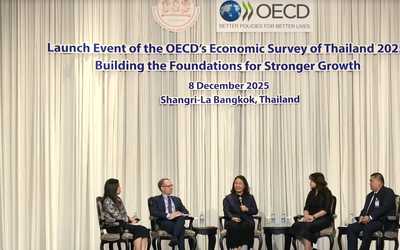Revisiting Thailand's Monetary Policy Model for an Integrated Policy Analysis
Abstract
The constraints facing conventional monetary policy during the recent COVID-19 pandemic accelerate the central banks' use of integrated policy, using multiple tools to fulfill their macroeconomic objectives. This paper, therefore, aims to improve Thailand's monetary policy model for conducting policy analyses involving multiple tools. We embed macro-financial linkages into our model, which facilitate the identification of various policy tools at the central bank's disposal. The model also features multiple sources of nonlinearity, including an effective lower bound (ELB) constraint, to better capture economic dynamics during crises. We allow for a joint calibration of several tools, including conventional interest rate policy, foreign exchange (FX) intervention, macroprudential regulations and financial measures. Last, given a greater emphasis on financial stability, we attempt to measure macro-financial tail risks, which permit an analysis of policy trade-offs in addressing risks to financial stability. We show three applications of our model to shed light on potential gains from policy complementarity during the aftermath of COVID-19 pandemic: first, assessing the role of financial measures and FX intervention in supporting economic recovery; second, evaluating the interactions of monetary and macroprudential policies in maintaining financial stability; third, showing roles of fiscal policy as the ELB constraint binds.











